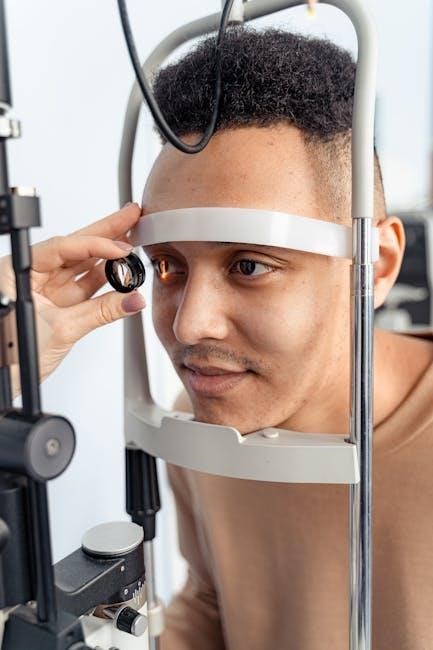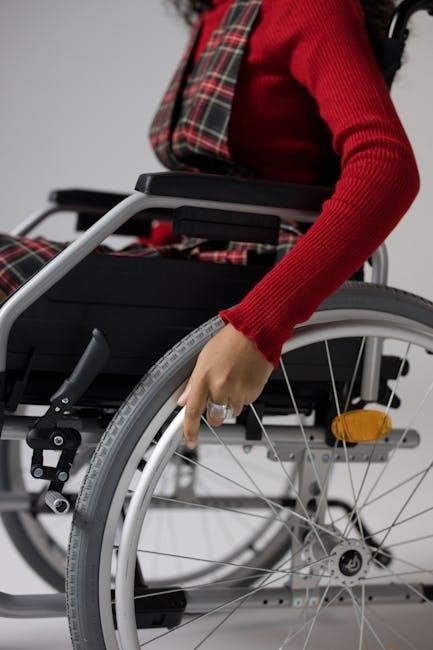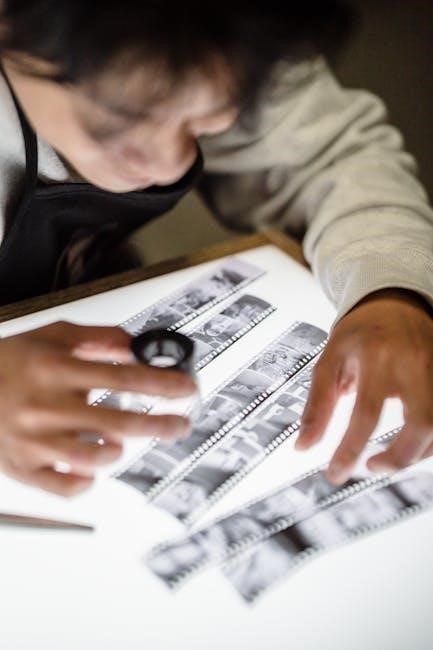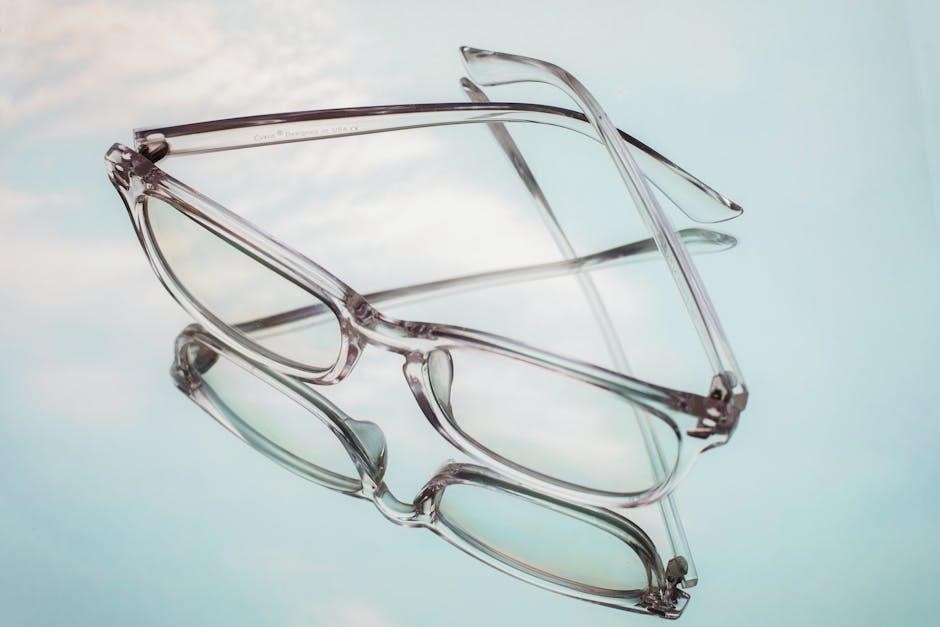Subaru EyeSight is an advanced driver-assist technology designed to enhance safety and comfort. It uses stereo cameras to enable features like adaptive cruise control and pre-collision braking. If issues arise, the system may disable itself, prompting a “Check Manual” message to ensure proper functionality and driver awareness.
Overview of Subaru EyeSight Technology
Subaru EyeSight is a sophisticated driver-assistance system that enhances safety and driving comfort. It utilizes dual stereo cameras mounted on the windshield to detect the environment, enabling features like adaptive cruise control, lane-keeping assist, and pre-collision braking. The system processes visual data to anticipate potential hazards and assist the driver. Initially available only in automatic transmission vehicles, EyeSight is now compatible with manual transmissions, offering comprehensive safety support across Subaru’s lineup. If issues arise, the system may disable itself, prompting a “Check Manual” alert to inform the driver of the need for troubleshooting or professional diagnosis.
Importance of EyeSight for Driver Safety
Subaru EyeSight plays a critical role in enhancing driver safety by providing advanced assistance in critical driving situations. Its features, such as adaptive cruise control and pre-collision braking, help reduce the risk of accidents by acting as an extra set of eyes on the road. EyeSight assists in maintaining lane position, detecting potential collisions, and alerting the driver to hazards. This technology not only enhances safety but also reduces driver fatigue, making long drives more comfortable. If the system detects a malfunction, it disables itself and alerts the driver with a “Check Manual” message, ensuring awareness and prompting necessary action to restore functionality.

Understanding the “EyeSight Disabled. Check Manual” Message
The “EyeSight Disabled. Check Manual” message indicates a system malfunction, prompting drivers to review the owner’s manual for troubleshooting steps to restore functionality and ensure safe driving conditions.
Common Causes of the “EyeSight Disabled” Warning
The “EyeSight Disabled” warning often occurs due to obstructed camera views from dirt, snow, or fog. Low battery voltage during startup can also trigger this alert. Additionally, sensor misalignment, faulty wiring, or software glitches may disable the system. Certain models, like the 2017-2019 Forester and 2016-2020 Outback, are prone to these issues. If the system repeatedly deactivates during turns, it may indicate a sensor misalignment. Addressing these causes promptly ensures optimal functionality and safety on the road.
Model-Specific Issues and Known Problems
Certain Subaru models, such as the 2017-2019 Forester and 2016-2020 Outback, frequently experience EyeSight system malfunctions. These issues often stem from sensor misalignment or software glitches. Additionally, manual transmission vehicles initially lacked EyeSight compatibility, though recent updates have addressed this. Owners of these models should be vigilant about system alerts and consult their manuals for troubleshooting steps to maintain safety and functionality on the road. Regular updates and maintenance can help mitigate these known problems.
Temporary Disabling of Subaru EyeSight
Subaru EyeSight can be temporarily disabled by pressing and holding the EyeSight OFF button for 2 seconds while the vehicle is stopped. This allows drivers to deactivate the system when needed, ensuring it doesn’t interfere with specific driving conditions or preferences.
How to Temporarily Turn Off EyeSight
To temporarily disable Subaru EyeSight, press and hold the EyeSight OFF button on the steering wheel for 2 seconds while the vehicle is stationary. This deactivates all EyeSight functions until reactivated. Alternatively, you can disable EyeSight through the touchscreen settings by navigating to the Driver Monitoring System and toggling it off. Temporary deactivation is useful for specific driving conditions or personal preference, ensuring the system doesn’t interfere with your driving experience. Always remember to re-enable EyeSight when conditions allow to maintain optimal safety features.
When and Why You Might Need to Disable EyeSight
You may need to disable EyeSight temporarily in specific situations, such as heavy snow, fog, or dirt obstructing the cameras, which can cause malfunctions. Additionally, low battery voltage or software glitches might require deactivation. Some drivers prefer to turn it off during parking or off-road driving to avoid unnecessary alerts. Temporary disabling ensures the system doesn’t interfere with your driving experience, though it’s important to reactivate it for optimal safety on the road. Always refer to the manual for guidance on proper deactivation procedures.

Permanent Disabling of Subaru EyeSight
Permanent disabling involves removing the EyeSight fuse or deactivating the system through advanced diagnostic tools, though this is not recommended as it compromises safety features. Consult a professional for such actions, as improper disabling can cause long-term issues with your vehicle’s functionality and may void warranties or affect resale value.
Steps to Permanently Disable EyeSight
To permanently disable EyeSight, start by locating the system’s fuse, typically found in the fuse box under the hood. Remove the designated fuse to deactivate EyeSight. Alternatively, use a Subaru-specific diagnostic tool to disable the system through software settings. This method requires professional expertise to avoid damaging the vehicle’s electronics. Always refer to the owner’s manual or consult a Subaru technician, as improper disabling can lead to system malfunctions or safety risks. Ensure this action aligns with your driving needs and local regulations.
Consequences of Permanently Disabling EyeSight
Permanently disabling EyeSight removes advanced safety features like adaptive cruise control and pre-collision braking, increasing the risk of accidents. Drivers lose the system’s ability to alert or intervene in critical situations. Additionally, disabling EyeSight may void warranties or violate manufacturer recommendations. In some cases, it could also affect the vehicle’s resale value. Subaru advises against permanent deactivation unless absolutely necessary, as it compromises the safety benefits designed to protect occupants. Always consult the owner’s manual or a certified technician before making such changes.

Troubleshooting the EyeSight System
Troubleshooting Subaru EyeSight involves checking for error codes, ensuring camera clarity, and verifying system calibration. Consult the manual for detailed diagnostic steps and solutions to common issues.
How to Reset the EyeSight System
To reset the EyeSight system, ensure the cameras are clean and unobstructed. Restart the engine, then check for any error messages. If issues persist, consult the manual for specific reset procedures. In some cases, a professional diagnostic scan may be required to identify and clear system errors. Always refer to the owner’s manual or visit a Subaru dealer for accurate troubleshooting and resetting instructions.
Checking for Error Codes and Diagnostics
When the “EyeSight Disabled. Check Manual” message appears, it indicates a system malfunction. Check the owner’s manual for specific error codes or warnings. Use a diagnostic scan tool to identify faults, such as sensor misalignment or software issues. Visit a Subaru dealer for professional diagnostics, as they use specialized tools to detect and resolve system errors. Ensuring the EyeSight system is properly calibrated and updated is crucial for optimal functionality and safety.

Dealer and Professional Diagnosis
Visit a Subaru dealer for expert diagnosis of the EyeSight system. Technicians use specialized tools to identify and repair issues, ensuring system functionality and safety.
When to Visit a Subaru Dealer
Visit a Subaru dealer if the “EyeSight Disabled. Check Manual” message persists or if multiple warning lights appear. This indicates a potential system malfunction requiring professional diagnosis. Dealers use specialized tools to identify issues like sensor misalignment, software glitches, or hardware failures. Persistent errors or recurring system deactivation, especially in models like Forester or Outback, warrant expert attention. DIY repairs are not recommended, as EyeSight’s advanced technology requires certified technicians for accurate troubleshooting and resolution.
Diagnostic Tools and Procedures
Subaru dealers utilize specialized diagnostic tools to identify issues causing the “EyeSight Disabled. Check Manual” message. They employ scan tools to retrieve error codes and assess system functionality. Common diagnostics include checking sensor alignment, camera clarity, and software updates. If a malfunction is detected, technicians may recalibrate the EyeSight system or replace faulty components. Professional diagnosis ensures accurate troubleshooting and prevents further system disruptions, restoring EyeSight’s safety features effectively.
Model-Specific Considerations
Certain Subaru models, such as the Forester and Outback, are more prone to “EyeSight Disabled” issues due to sensor misalignment or software glitches.
Manual transmission vehicles, like the 2024 WRX TR and BRZ tS, now support EyeSight, with specific operating characteristics tailored for M/T driving.
EyeSight Issues in Forester and Outback Models
The Subaru Forester and Outback models, particularly from 2017-2019 and 2016-2020 respectively, are known to experience recurring “EyeSight Disabled” issues. Common causes include sensor misalignment after minor accidents or improper repairs, as well as camera obstruction from dirt or weather conditions. Electrical system glitches and software bugs also contribute to system malfunctions. Owners often report the “Check Manual” warning during these incidents. While some issues can be resolved by cleaning the cameras or restarting the system, persistent problems may require professional diagnosis at a Subaru dealership.
Compatibility with Manual Transmission Vehicles
Subaru EyeSight is now available for manual transmission vehicles, starting with the 2024 WRX TR and BRZ tS models. This compatibility was achieved by refining the system to work seamlessly with manual transmissions, ensuring features like adaptive cruise control and pre-collision braking function effectively. However, certain driving scenarios, such as stalling during emergency stops, raised concerns about system interference. Subaru addressed these by tailoring EyeSight’s response to manual transmission dynamics, ensuring safety without compromising the driving experience.

Resetting the EyeSight System After a Disable
To reset Subaru EyeSight after disabling, clean the cameras, restart the vehicle, and check for error codes using a diagnostic tool. Consult the manual for guidance.
Steps to Reactivate EyeSight
To reactivate Subaru EyeSight after disabling, ensure the stereo cameras are clean and free of obstructions. Restart the vehicle and check for any remaining error codes. If issues persist, consult the owner’s manual for specific reset procedures. In some cases, a diagnostic scan tool may be required to clear system faults. Once all corrections are made, the EyeSight system should automatically reactivate, restoring its safety features. If problems continue, visit a Subaru dealer for professional assistance.
Post-Reset Checks and Precautions
After resetting the EyeSight system, ensure all cameras and sensors are clean and unobstructed. Test adaptive cruise control and lane-keeping features in a safe environment to confirm proper functionality. Monitor the instrument cluster for any recurring warnings or error codes. Avoid sudden maneuvers until the system stabilizes. If issues persist, consult the owner’s manual or contact a Subaru specialist. Regular checks and maintenance will help maintain EyeSight’s reliability and ensure optimal driver assistance.

Best Practices for Maintaining EyeSight Functionality
Regularly clean the EyeSight cameras and sensors to ensure clear visibility. Avoid obstructions like stickers or covers. Update software periodically and refer to the owner’s manual for guidance.
Regular Maintenance Tips
Regularly clean the EyeSight cameras and sensors to ensure clear visibility. Avoid placing stickers or covers on the windshield near the cameras. Check for software updates and install them promptly. Consult the owner’s manual for specific guidance on maintaining the system. Inspect the camera alignment periodically, especially after collisions or repairs. Keep the windshield free of debris and ensure proper wiper function. Address any error messages promptly and avoid disabling the system unnecessarily. Schedule professional inspections to ensure optimal functionality and safety.
Avoiding Common Pitfalls
Avoid obstructing the EyeSight cameras with stickers or aftermarket accessories. Refrain from disconnecting the battery without following proper procedures to prevent system resets. Avoid ignoring error messages, as they indicate potential issues needing attention. Do not manually disable EyeSight unless necessary, as it compromises safety features. Be cautious of extreme weather conditions that may impair camera functionality. Never attempt DIY repairs on the EyeSight system without professional guidance. Regularly update software to maintain compatibility and performance. Ensure all maintenance is performed by certified technicians to preserve system integrity and reliability.